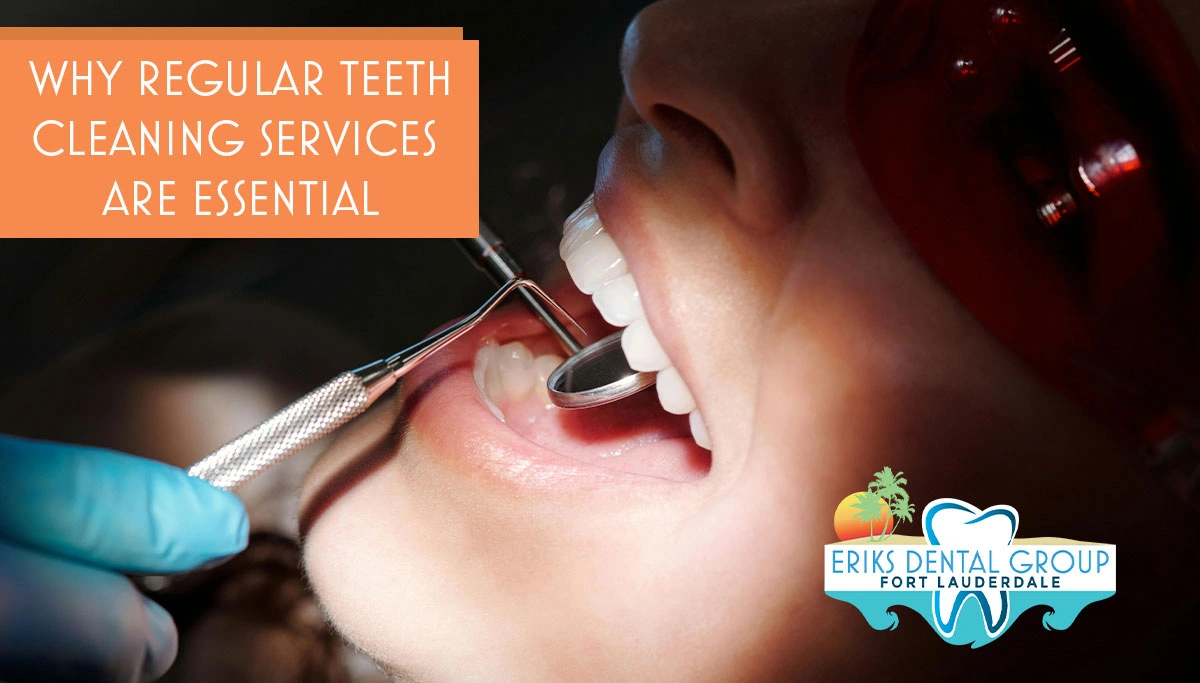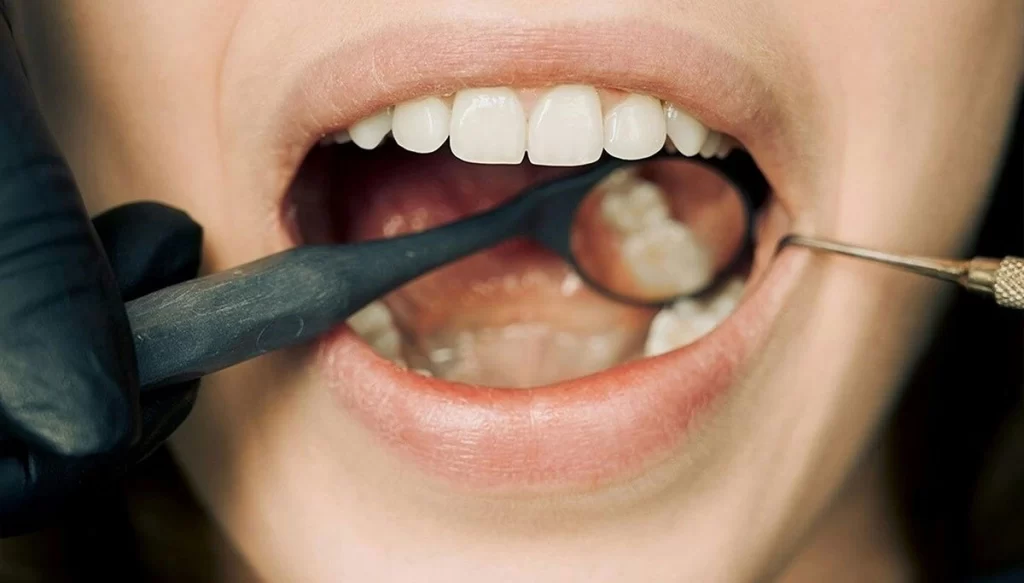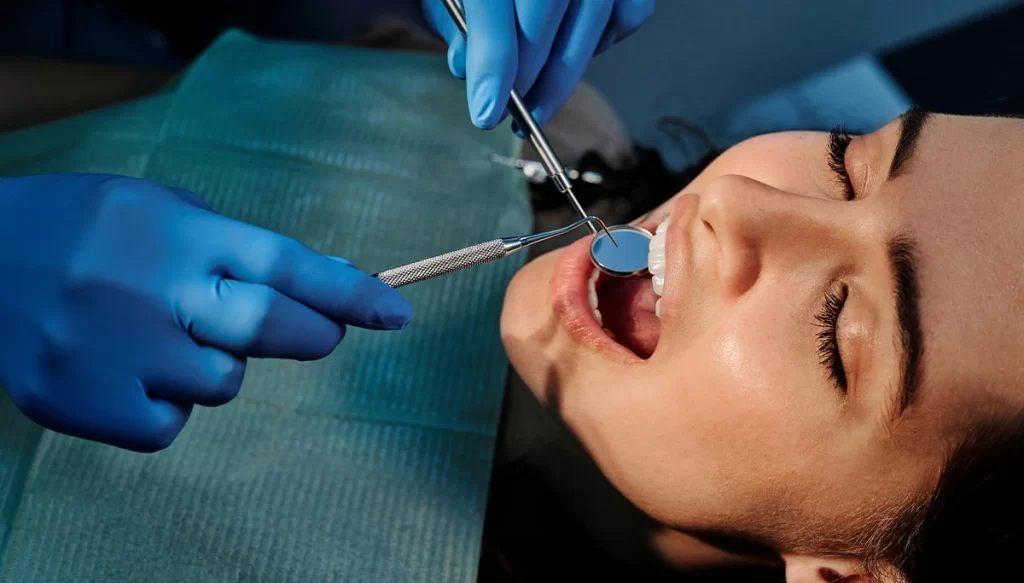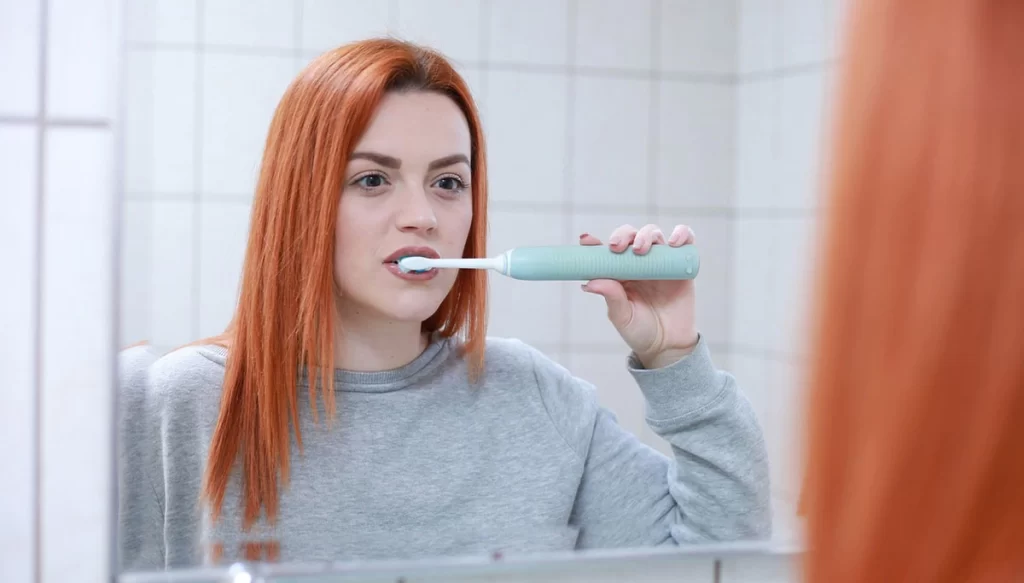
You may brush your teeth and floss every day, twice a day, and, think you are doing a pretty good job, and you most likely are! Unfortunately, that is not enough. You should also use professional teeth cleaning services at least twice a year, or as often as recommended by your preferred Fort Lauderdale dentist.
You may be thinking, why should I bother? Simply put, the reason is ‘plaque’. If plaque is not removed it can lead to tooth decay and cavities that require dental fillings.
Dental plaque develops naturally when the bacteria in your mouth combines with your saliva, food particles in your mouth, and sugars from the food and drinks you consume.
Plaque is the soft, sticky film made by bacteria that constantly forms on your gums and teeth. While plaque can be difficult to see because it is fairly colorless, you can feel it when you move your tongue along your teeth. You will feel a slippery and slightly furry film covering your teeth.
If plaque is not managed correctly it can lead to negative consequences. Keep on top of this by getting your teeth cleaned regularly and as often as recommended by your dentist.

Plaque can significantly impact your overall health, extending beyond oral health issues. Here’s how.
Plaque bacteria produce acids after coming in contact with sugars and starches from the food and drinks you consume. These acids erode tooth enamel, leading to tiny holes or cavities.
Dental plaque b begins to calcify into tartar (calculus) within 24 to 72 hours if it is not removed through proper brushing and flossing. Once hardened, tartar cannot be removed at home and requires professional cleaning by a dentist or dental hygienist.
Plaque buildup along the gumline can irritate and inflame the gums, causing redness, swelling, and bleeding. This is the early stage of gum disease.
If gingivitis is not treated, plaque can harden into tartar and lead to more serious gum issues. Gums can pull away from the teeth, bone and, tissue can be destroyed, and teeth may loosen or fall out.
Plaque harbors bacteria that can release unpleasant odors, contributing to bad breath.
If plaque is not removed, it hardens into tartar (calculus), which can only be removed by a dentist. Tartar makes it easier for plaque to grow and can worsen oral health issues.
Studies suggest that untreated plaque and gum disease are linked to other health conditions, such as heart disease, diabetes, and stroke, due to the inflammation caused by bacteria entering the bloodstream.
Dentists recommend a cleaning every six months, but individuals with gum disease, braces, or other risk factors may require more frequent teeth cleaning visits

Typical professional teeth cleaning services take about 30–60 minutes, depending on the level of tartar buildup, gum health, and whether additional treatments like fluoride are included
The dental hygienist or dentist examines your mouth using a small mirror and dental tools to identify signs of plaque, tartar, cavities, or gum disease. This helps pinpoint problem areas and assess overall oral health before starting the cleaning
The hygienist uses a scaler, an ultrasonic device with vibrations, or hand tools to remove plaque and hardened tartar (calculus) from teeth surfaces, especially along the gum line and between teeth. This is important because Tartar cannot be removed with brushing or flossing; professional tools are needed to prevent gum inflammation and decay
A high-powered electric brush with gritty toothpaste (prophylaxis paste) is used to polish your teeth. This step smooths the tooth surface and removes any remaining plaque or minor stains. Polishing leaves your teeth smooth, making it harder for plaque to adhere and giving your smile a brighter appearance.
The hygienist uses dental floss to clean between your teeth and remove any remaining debris or polish paste. Flossing reaches areas toothbrushes cannot. The hygienist may also assess your flossing technique and provide tips for improving oral health.
You’ll be asked to rinse your mouth with a solution, often containing fluoride or an antibacterial agent, to remove loosened debris and leave your mouth feeling fresh. This clears any leftover particles and prepares your teeth for the next steps.
A fluoride gel, foam, or varnish is applied to your teeth. This can be done with a tray that fits over your teeth or brushed directly onto the enamel. Fluoride strengthens tooth enamel, helps prevent cavities, and even reverses early signs of decay.
The dentist may review your teeth and gums, discuss any findings, and address concerns. He may recommend further treatment where necessary. A dentist can diagnose more complex issues.
The hygienist or dentist offers personalized advice on brushing, flossing, and other oral care habits. They may also suggest changes to your diet or lifestyle to improve oral health.
This step-by-step process ensures your teeth and gums stay healthy, clean, and protected against oral health issues.

The earliest “toothbrushes” were twigs called “chew sticks,” used as far back as 3500 BCE in ancient civilizations. These sticks had frayed ends for cleaning teeth. It is still common for people living in remote communities to use this method.
Adding fluoride to toothpaste in the 20th century significantly reduced tooth decay. Fluoride strengthens enamel and helps remineralize early cavities.
Brushing your teeth stimulates nerves and blood flow in your gums, which some studies suggest could have a small positive impact on brain health.
Brushing immediately after eating acidic foods or drinks can weaken enamel. It’s better to wait 30 minutes before brushing to allow saliva to neutralize the acid.
While trendy, charcoal toothpaste is often too abrasive and can erode enamel over time. Use it sparingly, if at all, and consult your dentist.
Dental health is serious; proactively scheduling regular teeth cleaning treatments is key. Don’t wait until you have cavities or any of the above conditions.
To schedule a dental appointment at Eriks Dental Group in Fort Lauderdale, call our dental office at 954-463-5051.
© 2025 Eriks Dental Group - Fort Lauderdale - All Rights Reserved. Dental Website Design by Connectica